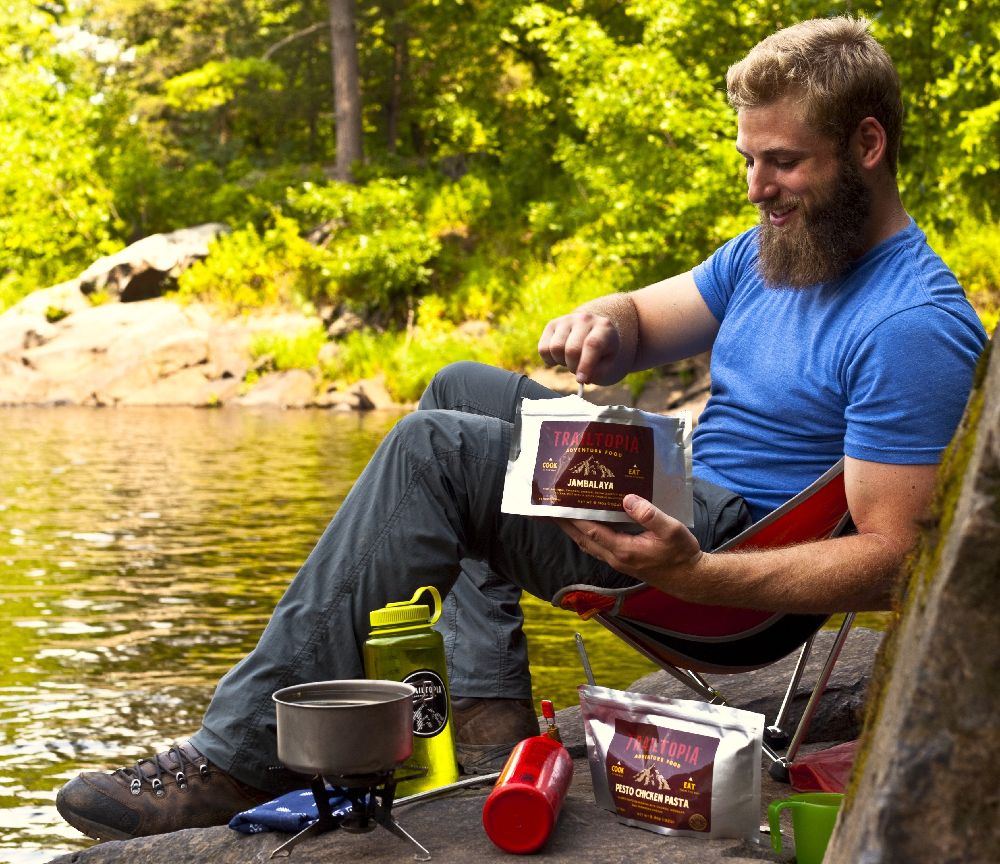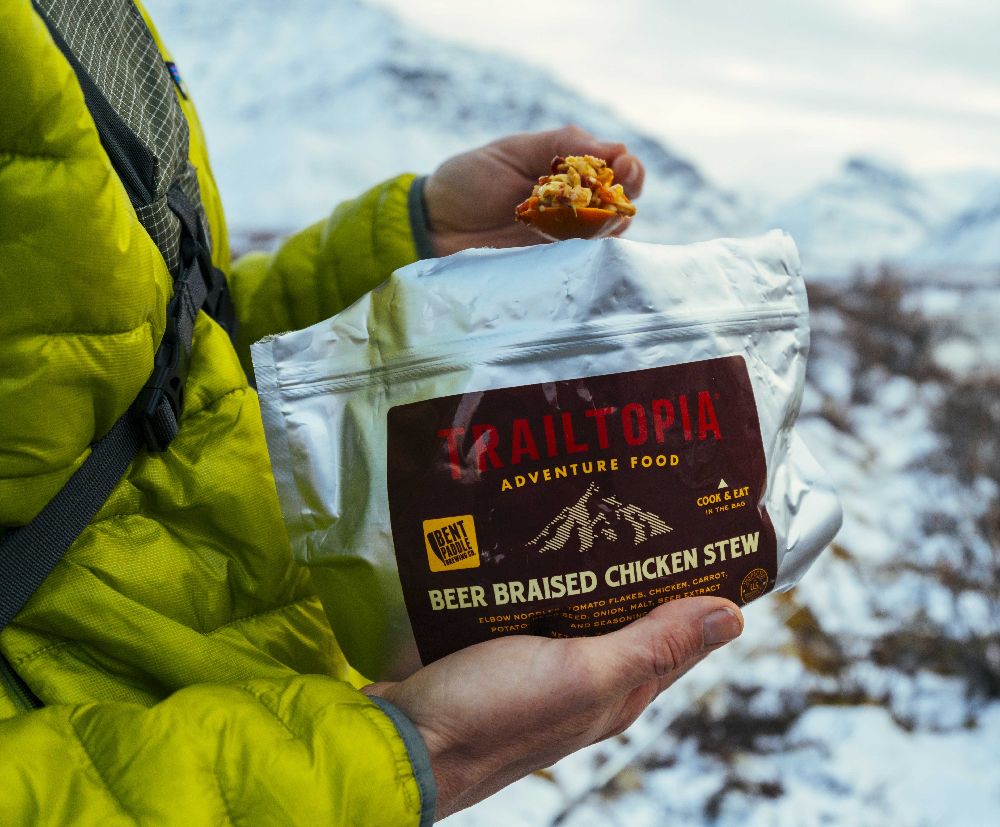1. What is freeze-dried food, and how is it made?
Freeze-dried food is created through a process that removes moisture from food while preserving its structure, flavor, and nutrients. The process works by first freezing the food, then placing it in a vacuum chamber where the frozen water transitions directly from solid to vapor. This allows the food to dry without being exposed to the high heat used in other drying methods, which helps retain its original taste and nutritional value.
Freeze-drying was first developed in the 1930s and gained prominence during World War II as a way to preserve blood plasma and medical supplies for transport. It later found its way into the food industry, famously used during the Apollo space missions in the 1960s, and today it’s a go-to method for making lightweight, shelf-stable meals perfect for backpackers, campers, and emergency prep.
2. Is freeze-dried food healthy?
Yes! When made with real, whole ingredients, freeze-dried food is a healthy option because it preserves much of a food’s original nutrients and retains more vitamins and minerals than other preservation methods like canning or traditional dehydration. There are no added preservatives required in the process either, which makes it a cleaner option for trail meals.
Of course, not all freeze-dried meals are created equal. The key is choosing meals made with recognizable ingredients and minimal additives. That’s exactly how we do it at Trailtopia. If you're curious about how we choose our ingredients and why they matter, we break it all down in our blog: Why Freeze-Dried Ingredients Matter.
3. How does freeze-dried food taste?
When made with quality ingredients, robust flavors, and a great recipe, freeze-dried food can taste surprisingly great, like a real, home-cooked meal (especially when you're a few miles deep on the trail). Since freeze-drying preserves the food’s original structure and flavor, meals tend to rehydrate with better texture and taste than traditional dehydrated options.
That said, not all freeze-dried meals are equal. At Trailtopia, we focus on real, flavorful recipes pulled from our family’s own kitchen. If you want to take your trail meals to the next level, check out our blog: 8 Great Additions to Any Trail Meal for easy ways to customize and elevate your backcountry dinners.
4. Are there any preservatives in freeze-dried foods?
One big advantage of freeze-dried food is that it typically doesn’t require added preservatives since the freeze-drying process itself acts as a natural preservation method by removing almost all moisture. Without moisture, bacteria and mold can’t grow, helping extend the shelf life safely.
5. Why is freeze-dried food popular among backpackers?
Freeze-dried meals have become a staple for backpackers for good reason! They’re incredibly lightweight due to nearly all of the water being removed during the freeze-drying process. They also hold the original flavors and textures of the ingredients for a more satisfying meal after a long day on the trail.
And the best part? They’re super convenient. Most freeze-dried meals are designed to cook right in the bag; just add boiling water, wait a few minutes, and enjoy. No pots, no cleanup, no stress. This combo of taste, simplicity, and packability is exactly why freeze-dried meals are a go-to for everyone from beginner hikers to seasoned thru-hikers.
6. How do I cook freeze-dried food?
One of the best things about freeze-dried meals is how quick and easy they are to prepare, especially when you're tired and hungry after a long day on the trail. Once you add boiling water, our meals cook in about 10 minutes.
At Trailtopia, we’ve taken that convenience a step further. Our specially engineered packaging minimizes space in your pack and maximizes ease at camp. No need for an extra-long spork or additional dishes since our meals cook in the bag! Plus, because our meals are hearty and delicious, chances are you’ll be licking your spoon clean, which means absolutely zero clean-up.
7. Can I cold rehydrate freeze-dried foods?
Yes, freeze-dried meals can be cold rehydrated! Cold rehydration simply means using cold (or room temperature) water instead of boiling water to prepare your meal. While not all freeze-dried foods are ideal for this method, some are perfect candidates, like our pudding desserts, which are designed to be cold-rehydrated. Just add water, stir, and wait a few minutes for a sweet and simple trail treat.
For more info on how to go stoveless and what meals work best with cold rehydration, check out our blog: Cold Rehydration a.k.a. Going Stoveless. Whether you're skipping the stove for simplicity or saving fuel for longer treks, cold rehydration can be a smart (and tasty) option on the trail.
8. How does freeze-dried food differ from dehydrated food?
While both processes remove moisture to preserve food, freeze-dried meals retain more nutrients, rehydrate faster, and have a longer shelf life compared to dehydrated options. That means better taste, texture, and convenience, especially when you’re deep in the backcountry.
If you want to learn more about the differences (and why they matter on the trail), check out our full blog post: Freeze-Dried vs. Dehydrated: What’s the Difference & Why It Matters.
9. Is freeze-dried food suitable for people with dietary restrictions?
Yes! At Trailtopia, we offer a variety of freeze-dried meals that cater to different dietary needs, without sacrificing flavor. Whether you're gluten-free, vegetarian, or vegan, we've got trail-ready options for you:
We believe everyone should be able to enjoy hearty, delicious meals on the trail, no matter their dietary needs.
10. Can freeze-dried foods go bad?
Freeze-dried foods are known for their impressive shelf life, many can last up to 25 years when stored properly!. At Trailtopia, our meals currently have a 5-year shelf life, and we’re in the process of extending that to 10 years soon. This makes freeze-dried meals perfect for long-term storage, emergency kits, and spontaneous adventures. Just store them in a cool, dry place, and they’ll be ready when you are!
If you have any additional questions about freeze-dried food, leave them in the comments!


























